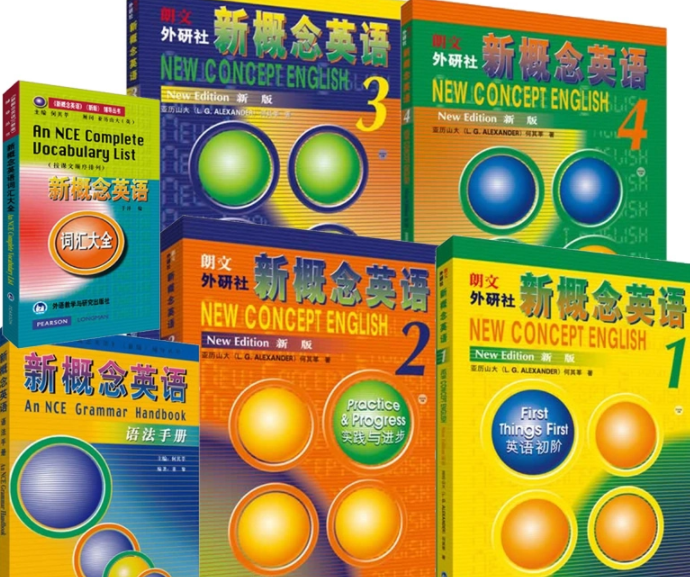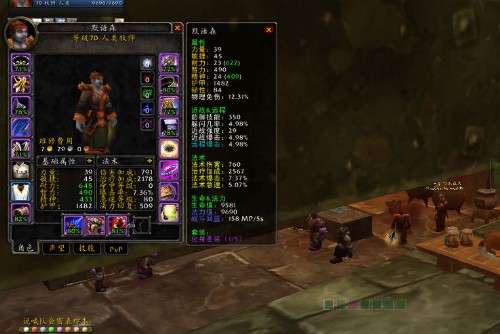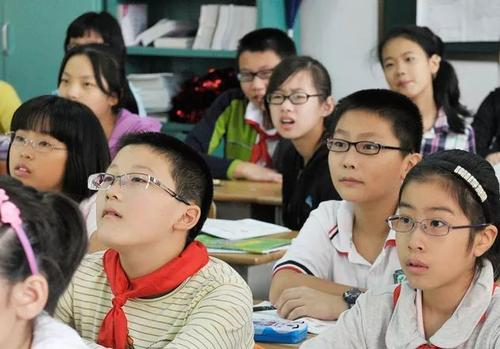六年级英语复习资料
的有关信息介绍如下:
小学英语语法汇总一、时 态 小 结时态 定义 特征 动词的变化规则一般现在时 表示经常性或习惯性的动作. every day/morning/…usually 第三人称单数的变化情况:1. 一般情况在词尾直接加-s2. 以ch,sh,s,x或o结尾的词加-es(wishes)3. 以辅音字母加y结尾的词,将y改成i再加-es(flies)现在进行时 表示现在或现在一阶段正在进行的动作. now/ look/ listen 现在分词的变化情况:1. 一般情况在词尾直接加-ing2. 以e结尾的词,去掉e再加-ing(skating)3. 以重读闭音节结尾的词,双写最后一个字母加-ing (swimming)一般过去时 表示过去某时发生的动作或情况. yesterday morning/afternoon/eveninglast year/montha minute ago/an hour agothis morning/afternoon/evening 动词过去式的变化情况:1. 一般情况在词尾直接加-ed2. 以e结尾的词加-d(lived)3. 以辅音字母加y结尾的词,将y改成i再加-ed(flied)4. 以重读闭音节结尾的词,双写最后一个字母加-ed(stopped)一般将来时 表示将要发生的事情 tomorrowthe day after tomorrow/the next day/Monday…at the weekend/tonighttomorrow night/morning/afternoon 主要构成be going to/will + 动词原形 be +形容词凡是在must, mustn’t, can, can’t, let’s, don’t, may,will后的一定要用动词的原形二、名词的复数。 名词按其数,可分两种:可数名词和不可数名词. 可数名词的复数变化规则:1.一般情况下,直接在词尾加-s, 如:girl-girls, book-books, pen-pens2.以s,x,sh,ch结尾的词,在词后加-es, 如:class-classes, box-boxes, match-matches,3.以辅音字母+y结尾的,变y 为i 再加-es, 如:city-cities, family-families, country- countries4.以f或fe结尾的,变f或fe为v再加-es, 如:knife-knives, wife-wives, life-lives,5.以o 结尾的加-es或-s, 如: radio-radios, tomato-tomatoes, potato-potatoes, zoo-zoos, photo-photos,6.man-men, woman-women, foot-feet, child-children,三、形容词的比较级、最高级。 形容词有比较级与最高级之分, 单音节词的变化规则:1.一般情况下,直接在词尾加-er或-est, 如:small-smaller-smallest, short-shorter-shortest2.以e结尾的,直接加-r或-st, 如:large-larger-largest, nice-nicer-nicest.3.以辅音字母+y结尾的, 变y 为i 再加-er或-est, 如:busy-busier-busiest, heavy-heavier-heaviest. 4.以重读闭音节,一个辅音字母结尾的,双写该字母,再加-er或-est, 如:big-bigger-biggest, thin-thinner-thinnest.5.多音节的词,前加more, most, 如: beautiful-more beautiful-most beautiful. 6.good-better-best四、be 动词,助动词。现阶段be动词形式有: am, is, are, were, was, isn’t, aren’t, weren’t, wasn’t助动词形式有: do, does, did, don’t, doesn’t, didn’t※ 1. 在英语句子中进行变化的时候, 有be动词的就在be动词上变化,变 “过去”, “否定”; 否定 过去 否定am-------am not(第一人称 “I” ) am, is ---wasn’t is ------- isn’t (第三人称) are -----weren’t are------aren’t (you和其它人称) 2. 没有be动词的就要加助动词; 否定 过去 过去否定do -----don’t ------did---------didn’tdoes(第三人称单数)-----doesn’t ------did---------didn’t五.人称代词主语 物主代词 宾格 形容词性 名词性 I my mine meshe her hers herhe his his himit its its ityou your yours youwe our ours usthey their theirs them可数名词与不可数名词“分家”一、 可数名词与不可数名词的区别 普通名词所表示的人或事物是可以按个数计算的,这类名词叫可数名词。可数名词分为个体名词(表示某类人或事物中的个体,如worker, farmer, desk, factory等)和集体名词(表示作为一个整体来看的一群人或一些事物,如people, family 等)。如果普通名词所表示的事物是不能按个数来计算的,这类名词就叫不可数名词。不可数名词分为物质名词(表示无法分为个体的物质,如meat, rice, water, milk, orange 等)和抽象名词(表示动作、状态、情况、品质等抽象概念,如work, homework, time, health, friendship等)。二、 可数名词 可数名词有单数和复数两种形式。指一个人或一件事物时,用单数形式;指两个或多个人或事物时用复数形式。名词由单数形式变成复数形式的规则如下:1. 一般的名词词尾直接加-s 。如:book → books room → rooms house → houses day → days2. 以s, ss, ch, sh, x 结尾的名词,在词尾加-es 。如:bus → buses glass → glasses watch → watches dish → dishes box → boxes3. 以"辅音字母+y"结尾的名词,要先将y改为i再加-es。如:city → cities body → bodies factory → factories等等。4. 以f 或fe 结尾的名词,要将f或fe改为v再加-es。如:half → halve leaf → leaves knife → knives wife → wives5. 特例 ① child → children② man → men woman → womenpoliceman → policemen(规律:man → men) ③ tomato → tomatoes potato → potatoes [ 初中英语以o 结尾的名词变复数时只有这两个词加-es,其余的当然加-s喽!如:photo → photos ]④ foot → feet tooth → teeth⑤ sheep, Chinese, Japanese单、复数同形 [悄悄话:变复数时词形不变。]⑥ people单数形式表示复数意义,要求谓语动词用复数; people的复数形式peoples通常指"多个民族"。 三、 不可数名词1. 不可数名词没有复数,当它作句子的主语时,谓语动词要用单数形式。如:The food is very fresh. 食品很新鲜。2. 有的不可数名词也可以作可数名词,有复数形式,但他们的意义往往发生变化。如:water (水) → waters (水域) orange (橘汁) → oranges (橘子)3. 很多的不可数名词表示泛指时为不可数,表示种类时就可数,但意义大多不发生变化。如:fruit → fruits food → foods fish → fishes hair → hairs用所给名词的适当形式填空。 1. How many________(sheep) are there on the hill? 2. There is some________(food) in the basket. 3. The baby has only two________(tooth) now. 4. There is a lot of________(water) in the bottle. 5. There are five________(people ) in his family. 6. Let's take________(photo), OK? 7. I have lots of________(tomato) here. 8. The________(leaf) on the tree turn-yellow. 9. The________(child) are playing games on the playground now. 10. Their________(dictionary) look new. 11. I see you have a few white________(hair). 12. They are________(woman) doctors. 13. Can you give me some bottles of ____ (orange), please? 14. There are many________(fox) in the picture. 15. I would like some apple________(juice). I am very thirsty.参考答案:1. sheep 2. food 3. teeth 4. water 5. people 6. photos 7. tomatoes 8. leaves 9. children 10. dictionaries 11. hair, hairs 12. women 13. orange 14. foxes 15. juice名词可数不可数“六注意”一、可数名词是可以用来计数的名词。可数名词有单数和复数形式。如:desk-desks, apple-apples等。不可数名词是不可以直接用来计数的名词。不可数名词没有复数形式,只有单数形式。如:some bread, a little milk等。二、单数可数名词表示泛指时,前面要用不定冠词a(an),表示特指时,前面要用定冠词the; 而不可数名词前不能用a(an)修饰,表示特指时,前面一定要用定冠词the。如: He is a factory worker. 他是一名工人。 No one can see air. 没有人能看见空气。三、可数名词和不可数名词前都可以用some, any, a lot of, lots of 等来修饰,表示"一些,许多"。如: There are some oranges on the desk. 桌子上有一些桔子。 There is a lot of water in the bottle. 瓶里有许多水。四、可数名词前可用具体的数词来表示具体的数量。如:two apples, four books等。不可数名词前通常用"单位词+of"来表示数量。如: a piece of paper, three pieces of paper等。五、可数名词作主语时,谓语动词的单复数与主语的单复数保持一致。如: This picture is very beautiful. 这幅画很美。 不可数名词作主语时,谓语动词要用单数形式,但是不可数名词前有复数"单位词"时,谓语动词要用复数形式。如: There are two cups of tea on the table. 桌上有两杯茶。六、对可数名词前的修饰语提问用how many; 对不可数名词前的修饰语提问用how much。 如: How many apples are there in the box?盒子里有多少个苹果? How much tea is there in the cup?杯里有多少茶水? 注意:对不可数名词前的"单位词"的修饰语提问时,疑问词用how many。 如: How many pieces of bread are there on the plate?盘子里有多少片面包? “行行色色”的名词所有格在英语中,特别是表示有生命的名词,可以加's表示所属关系,名词的这种形式我们称之为名词的所有格。 一、名词词尾加's的所有格1. 一般情况在名词后加's。例如: That girl's coat is in the room. 那个女孩的衣服在房间里。2. 在以s结尾的名词(包括以s结尾的复数名词)后面,只加 '。 如果复数名词不是以s结尾的,末尾也要加's。例如: Today is September 10th, Teachers' Day. 今天是九月十日,教师节。Children's Day is coming, I should buy something new for my son. 儿童节马上就要到了,我应该为我的儿子买一些新东西。3. 表示词组内的并列名词各自的所有关系时,须在各个名词后加's;如果一个东西为两个人或者两个以上的人共同拥有,只在最后一个名词后面加's。例如:They are John's and Kate's rooms. How beautiful they are! 这是约翰和凯特的房间。它们(指房间)太漂亮了! He is Lily and Lucy's father. 他是莉莉和露西的爸爸。4. 表示某人的家、店铺等的所有格,一般可以省略它后面所修饰的名词。例如:My father and I will have dinner at the Johnson's (home ). 我爸爸和我将要去约翰逊的家吃晚饭。 We will have our hair cut at the barber's (shop) tomorrow afternoon. 明天下午我们要去理发店理发。5. 有些指时间、距离、国家、城镇等的名词,也可以加's构成所有格。例如:There is something important in today's newspaper. 今天的报纸上有一些重要的东西。It's about ten minutes' walk from school to our home every day. 每天从学校到我们家步行大约需要十分钟。6. 英语名词所有格修饰的词,如果前面已经提到过,后面则可以省略,以防止重复。例如:This is not Dick's dictionary, but is Tom's.这不是迪克的字典,但是是汤姆的。二、由of短语构成的所有格1. 表示“无生命的名词”一般与of构成短语,表示所有关系。例如:There is a river on the other side of the road. 在公路的另一边有一条河。2. 有时我们用名词 + of +名词所有格构成双重所有格的形式。例如: This is a photo of Mr Brown's. 这是一张布朗先生的照片。





















